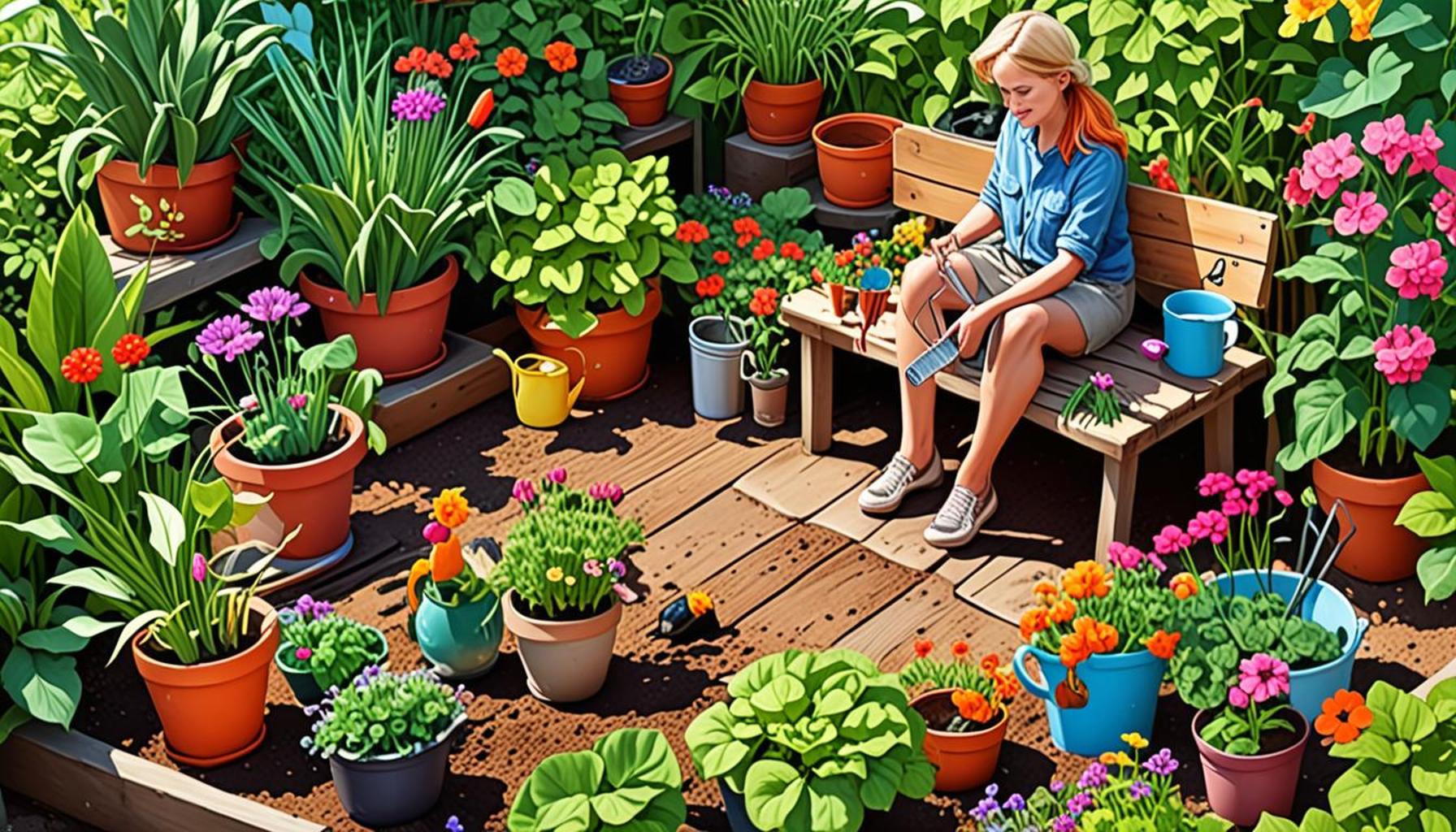Building Refuge: Creativity in Creating Natural Shelters

Introduction to Natural Shelters
The art of building natural shelters showcases human ingenuity and adaptability. Throughout history, diverse cultures have employed creativity to craft safe havens from nature’s elements. Today, this age-old practice inspires modern enthusiasts to explore the intersection of sustainability, resourcefulness, and design.
Natural shelters typically incorporate:
- Local Materials: Utilizing wood, leaves, stone, and other native resources ensures minimal environmental impact and greater harmony with the surrounding ecosystem. For instance, in the Pacific Northwest, abundant cedar trees are often used for constructing traditional Native American longhouses.
- Traditional Techniques: Implementing methods passed through generations allows builders to tap into both historical wisdom and time-honored practices. Techniques such as wattle and daub or thatching roofs have been perfected over centuries, providing durability and weather resistance.
- Innovative Designs: Blending form and function allows for the creation of comfortable and aesthetically pleasing spaces. Many contemporary designs incorporate features like green roofs or natural ventilation, enhancing energy efficiency while maintaining a strong connection to nature.
In the United States, the growing interest in sustainable living has fueled a resurgence in natural shelter construction. Breathtaking examples of this creativity include:
- Earthships: These self-sustaining homes are engineered from natural and recycled materials, including tires, bottles, and cans. Earthships are designed to be off-grid, harnessing solar and wind energy for power while utilizing rainwater harvesting systems for their water supply.
- Log Cabins: A quintessential part of American history, log cabins evoke images of frontier life. This time-honored structure, often made from locally sourced timber, provides both charm and long-lasting durability, making them a popular choice for families seeking rustic retreats in nature.
- Yurts: Originating from Central Asia, these portable, round tents have found a place in the American landscape as eco-friendly vacation homes and camping alternatives. The design allows for excellent insulation and airflow, making them suitable for a variety of climates.
The exploration of natural shelters represents a path toward innovative housing solutions as communities increasingly seek alternatives to conventional living arrangements. These unique refuges promote a harmonious relationship with the environment while also addressing contemporary challenges, such as climate change and urbanization. This article delves into the principles, designs, and benefits of creating natural shelters while highlighting the creative spirit that continues to inspire builders across the nation.
Ultimately, understanding these practices opens up new prospects for sustainable living, urging us to rethink how we construct our habitats. The journey into the world of natural shelters not only enriches our knowledge of building techniques but also reconnects us with nature in a meaningful way.
Principles of Building Natural Shelters
The foundation of successful natural shelter construction hinges on a few crucial principles that blend both traditional know-how and modern innovation. Understanding these principles can provide a blueprint for anyone interested in embarking on a journey to create their own sustainable refuge.
1. Site Selection and Orientation
Choosing the right location is fundamental in constructing a natural shelter. Factors such as topography, climate, and sunlight exposure significantly impact the efficiency of the shelter. For example, building on elevated ground can help prevent flooding, while positioning the entrance to face away from prevailing winds can enhance comfort. Moreover, utilizing natural windbreaks like trees or hills can further protect the structure from harsh weather.
2. Sustainable Sourcing of Materials
Utilizing locally sourced materials not only minimizes transportation costs but also promotes environmental sustainability. The materials chosen should be compatible with the local ecosystem to ensure harmony and stability. Here are some commonly used materials in natural shelter construction:
- Wood: Easily worked and versatile, wood is a primary choice for framing and finishing. Various types of wood, such as oak or pine, can be used depending on regional availability.
- Stone: Perfect for foundation work, stone provides durability and a natural aesthetic. Dry-stacked stone walls require no mortar, making them an excellent option for eco-conscious builders.
- Earth: Available in abundance, earth can be used for building techniques like rammed earth or cob construction. These methods offer excellent insulation and thermal mass, keeping interiors comfortable.
- Plant Materials: Green roofs using grasses or local flora not only camouflage structures but also enhance insulation and biodiversity.
3. Climate Adaptation
Each region presents unique climatic challenges, and adept builders learn to adapt designs to meet these conditions. For instance, in arid environments, roofs may be angled to maximize shade while providing ventilation. Conversely, in colder climates, natural shelters might integrate thermal mass to retain heat. Strategies such as thermal mass walls, overhangs for shade, or ventilation openings help to enhance comfort and energy efficiency.
Natural shelters are not just about physical structures; they embody a philosophy that champions sustainability and sustainability while embracing traditional wisdom and modern adaptations. As more people turn to these creative solutions to address contemporary issues, an understanding of the principles behind building natural shelters becomes increasingly indispensable. This knowledge not only encourages skills development but also fosters a deeper connection with the land, promoting a lifestyle that is in sync with nature.
| Design Principles | Natural Components |
|---|---|
| Biophilic Design | Utilization of local resources |
| Sustainability | Enhanced ecological balance |
Exploring the theme of Building Refuge: Creativity in Creating Natural Shelters reveals essential design principles rooted in both function and aesthetics. The concept of biophilic design plays a crucial role, promoting a connection with nature that enhances mental well-being and reduces stress. By incorporating elements such as natural light and ventilation, builders achieve an innovative approach that remains harmonious with the environment.Utilizing local resources ensures that the shelters are not only cost-effective but also significantly reduce carbon footprints. The strategic selection of materials promotes sustainability, inherently supporting an enhanced ecological balance. This relationship between design and the environment showcases how creativity can lead to functional yet stunning natural shelters, offering a transformative lifestyle. Readers are invited to delve deeper into the intricate processes involved in creating these innovative spaces, effectively merging art with survival.
Techniques for Construction and Design
Once the foundational principles are in place, the next step in building natural shelters involves exploring various construction techniques and design components. These methods not only reflect cultural heritage but also incorporate innovative strategies that enhance usability and resilience.
1. Earth-Based Techniques
Among the most eco-friendly methods are those which utilize earth-based structures. Techniques such as cob, made from a mixture of clay, sand, and straw, provide a sturdy and sustainable option for natural shelters. This material is not only abundant but also boasts excellent insulation properties. Similarly, rammed earth construction involves compacting soil within a formwork to create durable walls. In regions like New Mexico, these historical techniques are experiencing a resurgence, as builders aim to merge modern aesthetics with traditional styles.
2. Green Roofs and Living Walls
Incorporating green roofs and living walls into natural shelter designs can greatly enhance the sustainability factor. These designs not only provide insulation but also contribute to air purification and biodiversity. Roof gardens have gained popularity in urban settings, helping mitigate heat island effects while promoting wildlife habitats. For instance, cities like Portland have embraced these features in public buildings, showcasing how ecological architecture can coexist with urban environments.
3. Passive Solar Design
Another innovative approach lies in the principles of passive solar design. By strategically orienting shelters and using materials that store and disperse solar energy, builders can create homes that naturally regulate temperature. This technique optimizes sunlight exposure during winter months while mitigating overheating in the summer. Such designs are particularly beneficial in the American Southwest, where sun exposure is abundant. For example, the use of large south-facing windows provides daylight and warmth in cooler months, while overhangs prevent direct sunlight from entering in summer.
4. Natural Insulation Materials
Insulation is crucial in maintaining a comfortable environment, whether in cold or hot climates. Natural insulation options, such as sheep’s wool, straw bales, and recycled cotton, offer effective thermal properties while minimizing the environmental impact. Utilizing such materials not only reduces energy consumption but also decreases reliance on synthetic alternatives. For example, constructing a shelter using straw bales creates a highly insulated wall that is also biodegradable and conducive to sustainable living.
5. Integrating Indigenous Wisdom
Across the United States, indigenous communities have long employed innovative shelter designs that harmonize with nature. Concepts such as the tipi and earth lodge demonstrate how traditional practices can inform modern techniques. By studying these timeless structures, builders can gain insights into local materials and climate-responsive designs. Collaborating with indigenous architects and honoring traditional knowledge can lead to profound innovations in natural shelter construction, strengthening the connection between culture and environment.
By exploring these various techniques and drawing from historical precedents, individuals are better equipped to build their own natural shelters. Incorporating a sense of artistry and personal expression into the design not only beautifies these structures but also instills a deeper sense of purpose and place. As creativity flourishes in this realm, the concept of building refuge evolves into a collaborative canvas of ideas that challenge contemporary architecture while fostering a lifestyle aligned with nature.
Conclusion: Rethinking Our Relationship with Shelter
As we delve deeper into the art of building natural shelters, it becomes evident that this practice transcends mere construction; it embodies a profound relationship between humanity and the natural world. By returning to eco-friendly techniques and incorporating indigenous wisdom, we not only honor historical traditions but also pave the way for innovative, sustainable futures. The strategies outlined—from earth-based constructions to passive solar designs—illustrate a shift in mindset where functionality meets creativity, resulting in structures that reflect our values and aspirations.
Moreover, as we navigate urbanization and climate challenges, the integration of the green roofs and living walls signifies a commitment to coexist harmoniously with our environment. These designs provide practical solutions to pressing issues such as air quality and biodiversity loss, showcasing how creativity in building can directly contribute to ecological well-being.
Ultimately, building refuge goes beyond crafting a physical space; it encourages us to foster a sense of community and connection to our surroundings. By being mindful of our choices and embracing the principles of sustainable living, we can create shelters that not only serve as protective havens but also enrich our lives. As we continue to explore the profound depths of creativity in natural shelter building, let us remember that every project is an opportunity—a chance to reinvent our spaces while respecting the planet that makes it all possible.


